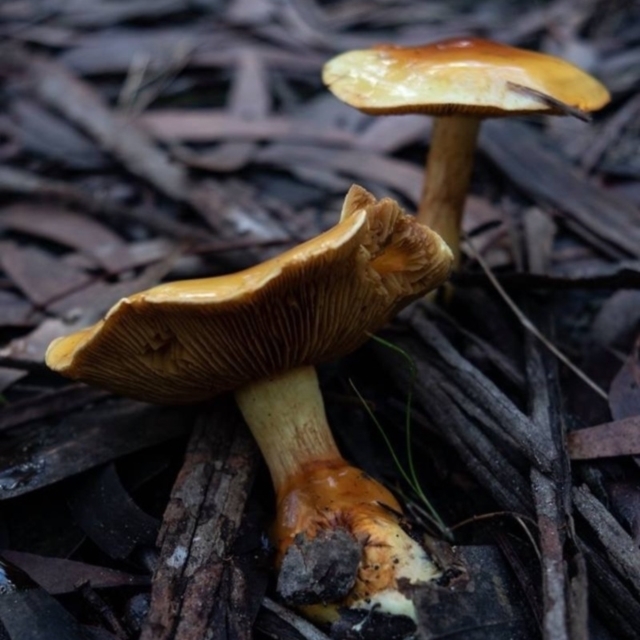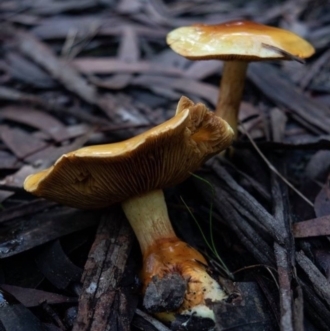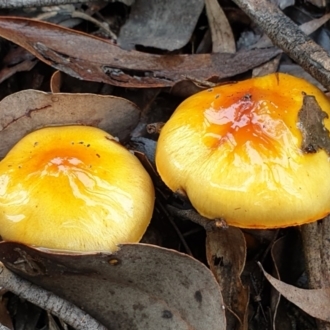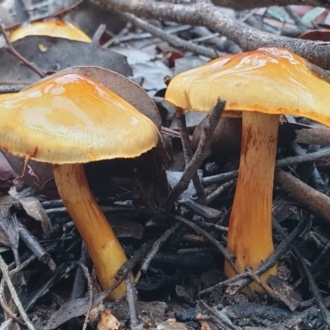Cortinarius sinapicolor (Slimy Yellow Cortinar)
The fruitbody is a mushroom, with a cap atop a central stem. The cap may grow to about 10 centimetres in diameter, but mature caps are often much smaller. The length of the stem is similar to the diameter of the cap and is fairly stout. The stem, cap and gills are yellow to yellow-orange, though the gills become more brownish once the spores have matured and the cap may be brownish towards the centre. The cap and stem are smooth. In fresh specimens the cap is very glutinous and so is the stem (below the partial veil), but this glutinous layer may disappear in dry conditions.
Spore print: rust-brown.
There is cobwebby partial veil. This disappears one the cap has expanded but it often leaves traces as spore-coated, rusty-brown fibrils on the stem.
The mushrooms may appear in a variety of habitats near eucalypts. This is a native species and the first published description appeared in 1933, based on material collected in South Australia. The first half of the species epithet sinapicolor is based on the Latin word for mustard, so in full the epithet means ‘mustard-coloured’.
Horak & Wood note that in dried herbarium specimens the fresh colours have changed to red-brown or chestnut-brown.
Look-alikes
This is an unmistakeable species when you see it in ideal conditions with the colours still bright, evidence of rust-brown spores and the glue-like coating present over both cap AND stem. In less than ideal conditions identification may be a little more challenging.
Reference
E. Horak & A.E. Wood, (1990), Cortinarius Fr. (Agaricales) in Australasia. 1. Subgen. Myxacium and subgen. Paramyxacium, Sydowia, 42, 88-168.
Cortinarius sinapicolor is listed in the following regions:
Species information
- Cortinarius sinapicolor Scientific name
- Slimy Yellow Cortinar Common name
- Not Sensitive
- Local native
- Non-Invasive
- Up to 657m Recorded at altitude
- Machine learning
- External link More information
Follow Cortinarius sinapicolor
Receive alerts of new sightings
Subscribe
















